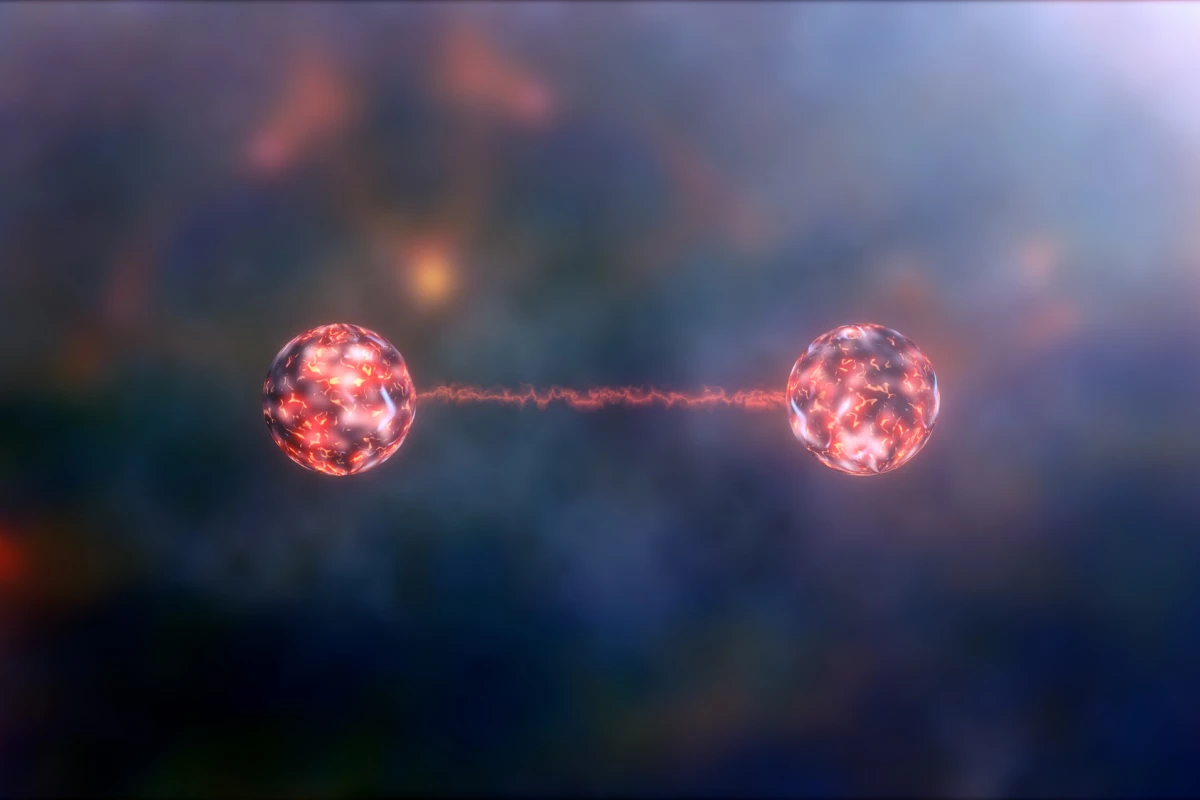Researchers in Germany have demonstrated quantum entanglement of two atoms separated by 33 km (20.5 miles) of fiber optics. This is a record distance for this kind of communication and marks a breakthrough towards a fast and secure quantum internet.
Quantum entanglement is the uncanny phenomenon where two particles can become so inextricably linked that examining one can tell you about the state of the other. Stranger still, changing something about one particle will instantly alter its partner, no matter how far apart they are. That leads to the unsettling implication that information is being “teleported” faster than the speed of light, an idea that was too much for even Einstein, who famously described it as “spooky action at a distance.”
Despite its apparent impossibility, quantum entanglement has been consistently demonstrated in experiments for decades, with scientists taking advantage of its bizarre nature to quickly transmit data over long distances. And in the new study, researchers from Ludwig-Maximilians-University Munich (LMU) and Saarland University have now broken a distance record for quantum entanglement between two atoms over fiber optics.
In their experiments, the team entangled two rubidium atoms kept in optical traps in two different buildings on the LMU campus. They were separated by 700 m (2,297 ft) of fiber optics, which was extended out to 33 km with extra spools of cable. Each atom was excited with a laser pulse, which causes it to emit a photon that’s quantum entangled with the atom.
The photons are then sent down the fiber optic cables to meet at a receiving station in the middle. There, the photons undergo a joint measurement, which entangles them – and because they’re each already entangled with their own atom, the two atoms become entangled with each other as well.
While photons have been entangled over great distances before, this study marks a new distance record for entangling two atoms, which could function as “quantum memory” nodes, over fiber optics. The key is that the mediating photons were converted into a longer wavelength so that they travel further through the fibers – their natural wavelength of 780 nanometers (nm) means they’d normally be lost after a few kilometers, so before their journey started the team ran them through a device to convert them to a wavelength of 1,517 nm. This is close to the 1,550-nm wavelength commonly used for telecoms in fiber optics, which reduces losses.
The team says this is an important step on the way to realizing a practical quantum internet. Such communications networks would be much faster and more secure than those in use today and, importantly, this study shows that they can operate using existing fiber optic infrastructure. This could be paired with technologies like satellites, which have previously demonstrated the ability to beam entangled photons over thousands of kilometers.
The research was published in the journal Nature.
Source: LMU




